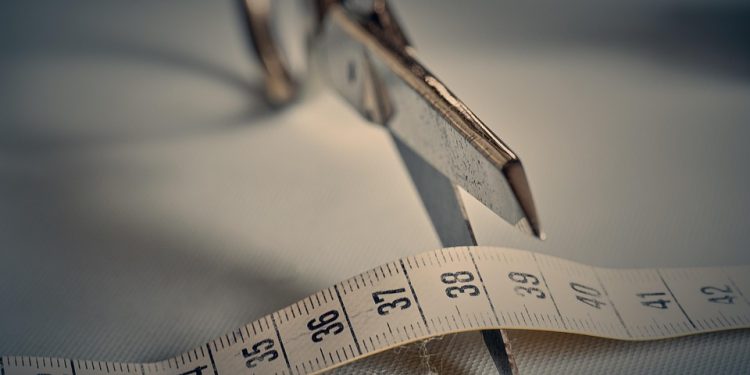Understanding Belly Fat: More Than Just an Aesthetic Issue
Belly fat, scientifically known as visceral fat, is more than just an unwanted aesthetic concern. It’s a type of fat that accumulates deep within the abdominal cavity, surrounding vital organs like the liver, stomach, and intestines. Unlike subcutaneous fat, which lies just beneath the skin, visceral fat poses significant health risks.
High levels of visceral fat are linked to increased risks of:
- Type 2 diabetes
- Heart disease
- High blood pressure
- Certain types of cancer
- Stroke
- Non-alcoholic fatty liver disease (NAFLD)
Therefore, reducing belly fat isn’t just about fitting into your favorite jeans; it’s a crucial step towards improving your overall health and well-being. Before diving into the “how,” understanding the “why” is essential for long-term motivation and success.
Debunking Common Belly Fat Loss Myths
The internet is flooded with quick-fix solutions and misleading information about belly fat loss. Let’s debunk some common myths:
Myth 1: Spot Reduction is Possible
The idea that you can target belly fat specifically with exercises like crunches is a myth. While abdominal exercises strengthen your core muscles, they don’t directly burn fat in that area. Fat loss occurs throughout the body, and genetics play a significant role in where you lose it first.
Myth 2: Certain Foods Burn Belly Fat
No single food magically melts away belly fat. While some foods can support weight loss efforts due to their nutrient density and satiety, they don’t possess fat-burning properties. Focusing on a balanced diet is key.
Myth 3: Starving Yourself is the Fastest Way
Severely restricting calories can lead to rapid weight loss initially, but it’s unsustainable and detrimental to your health. It can slow down your metabolism, lead to muscle loss, and trigger cravings, making it harder to maintain long-term weight loss.
Myth 4: You Need Expensive Supplements
While some supplements might offer marginal benefits, they are not a substitute for a healthy diet and regular exercise. Many supplements are unregulated and may contain harmful ingredients. Focus on whole, unprocessed foods instead.
Effective Strategies for Belly Fat Loss: What Actually Works
Now, let’s focus on evidence-based strategies that have proven effective in reducing belly fat:
1. Prioritize a Healthy Diet
Your diet plays a crucial role in fat loss. Focus on:
- Reducing Processed Foods, Sugary Drinks, and Added Sugars: These contribute to excess calorie intake and inflammation, promoting fat storage, especially in the abdominal area.
- Increasing Fiber Intake: Soluble fiber, found in foods like oats, beans, apples, and citrus fruits, helps you feel full, reduces calorie absorption, and may even help lower visceral fat.
- Consuming Lean Protein: Protein is essential for building and maintaining muscle mass, which helps boost your metabolism. Include sources like chicken, fish, beans, lentils, tofu, and Greek yogurt in your diet.
- Eating Healthy Fats: Incorporate sources of monounsaturated and polyunsaturated fats, such as avocados, nuts, seeds, olive oil, and fatty fish (salmon, tuna), which are beneficial for heart health and can support weight loss.
- Practicing Portion Control: Even healthy foods can lead to weight gain if consumed in excess. Use smaller plates and be mindful of your hunger and fullness cues.
Example Diet Plan Snippet:
Breakfast: Oatmeal with berries and a sprinkle of nuts.
Lunch: Grilled chicken salad with mixed greens, avocado, and a light vinaigrette dressing.
Dinner: Baked salmon with roasted vegetables (broccoli, carrots, bell peppers).
Snacks: Apple slices with almond butter, Greek yogurt with berries.
2. Engage in Regular Exercise
Exercise is a powerful tool for reducing belly fat. A combination of cardiovascular exercise and strength training is most effective:
- Cardiovascular Exercise (Cardio): Activities like running, swimming, cycling, and brisk walking burn calories and improve cardiovascular health. Aim for at least 150 minutes of moderate-intensity cardio or 75 minutes of vigorous-intensity cardio per week.
- Strength Training: Building muscle mass increases your metabolism, helping you burn more calories even at rest. Include exercises like squats, lunges, push-ups, and weightlifting in your routine. Aim for at least two strength training sessions per week, targeting all major muscle groups.
- High-Intensity Interval Training (HIIT): HIIT involves short bursts of intense exercise followed by brief recovery periods. It’s a time-efficient way to burn calories and improve cardiovascular fitness.
Example Workout Plan Snippet:
Monday: 30-minute brisk walk or jog.
Tuesday: Strength training (squats, lunges, push-ups, rows).
Wednesday: Rest or active recovery (yoga, stretching).
Thursday: 30-minute HIIT workout.
Friday: Strength training (deadlifts, overhead press, bench press).
Saturday: Long walk or bike ride.
Sunday: Rest.
3. Manage Stress Levels
Chronic stress can lead to increased cortisol levels, a hormone that promotes fat storage, particularly in the abdominal area. Effective stress management techniques include:
- Meditation and Mindfulness: Practicing mindfulness and meditation can help calm your mind and reduce stress hormones.
- Yoga and Tai Chi: These practices combine physical postures, breathing techniques, and meditation to promote relaxation and reduce stress.
- Spending Time in Nature: Studies have shown that spending time outdoors can lower cortisol levels and improve mood.
- Getting Enough Sleep: Aim for 7-8 hours of quality sleep per night. Sleep deprivation can increase cortisol levels and disrupt hormones that regulate hunger and satiety.
- Social Connection: Spending time with loved ones and engaging in social activities can reduce stress and improve overall well-being.
4. Prioritize Sleep
As mentioned above, adequate sleep is crucial for managing stress and regulating hormones that control appetite and metabolism. Lack of sleep can lead to increased cravings for sugary and fatty foods, making it harder to lose belly fat.
- Establish a Regular Sleep Schedule: Go to bed and wake up at the same time each day, even on weekends, to regulate your body’s natural sleep-wake cycle.
- Create a Relaxing Bedtime Routine: Avoid screen time before bed, take a warm bath, read a book, or listen to calming music.
- Optimize Your Sleep Environment: Make sure your bedroom is dark, quiet, and cool.
5. Limit Alcohol Consumption
Alcohol is high in calories and can contribute to belly fat accumulation. It can also interfere with your body’s ability to burn fat. If you choose to drink alcohol, do so in moderation.
- Stick to Moderation: For women, this means no more than one drink per day, and for men, no more than two drinks per day.
- Choose Lower-Calorie Options: Opt for light beer, wine, or spirits mixed with calorie-free mixers.
- Avoid Sugary Cocktails: These are often high in calories and sugar.
6. Stay Hydrated
Drinking plenty of water is essential for overall health and can also aid in weight loss. Water helps you feel full, boosts your metabolism, and can help you burn more calories.
- Aim for at Least 8 Glasses of Water per Day: Carry a water bottle with you and sip on it throughout the day.
- Drink Water Before Meals: This can help you feel fuller and eat less.
- Replace Sugary Drinks with Water: This is a simple way to reduce your calorie intake.
Tracking Your Progress
Monitoring your progress is crucial for staying motivated and making necessary adjustments to your plan. Track your weight, waist circumference, and body fat percentage regularly. Also, take photos of yourself periodically to visually track your progress. Remember that progress isn’t always linear; there will be ups and downs. The key is to stay consistent and patient.
The Importance of Consistency and Patience
Losing belly fat takes time and effort. There are no quick fixes or miracle solutions. Consistency is key. Stick to your healthy eating and exercise habits even when you don’t see immediate results. Be patient with yourself and celebrate small victories along the way. Remember that a healthy lifestyle is a marathon, not a sprint.
Conclusion: A Holistic Approach to Belly Fat Loss
Belly fat loss is achievable with a holistic approach that combines a healthy diet, regular exercise, stress management, adequate sleep, and mindful lifestyle choices. By focusing on these evidence-based strategies and debunking common myths, you can effectively reduce belly fat and improve your overall health and well-being. Remember to consult with a healthcare professional or registered dietitian for personalized guidance and support.
Frequently Asked Questions (FAQs)
Q: How long does it take to lose belly fat?
A: The timeline varies depending on individual factors like genetics, starting weight, diet, exercise routine, and consistency. Significant changes may take several weeks or months.
Q: Can I lose belly fat without exercise?
A: While diet plays a crucial role, exercise is highly beneficial for burning calories, building muscle, and improving overall health. Losing belly fat through diet alone is possible but often less effective and sustainable.
Q: What are the best exercises for belly fat loss?
A: A combination of cardiovascular exercise (running, swimming, cycling) and strength training (squats, lunges, push-ups) is most effective. HIIT workouts are also a great option for burning calories quickly.
Q: Are there any specific foods I should avoid to lose belly fat?
A: Limit processed foods, sugary drinks, added sugars, and excessive alcohol consumption. These contribute to excess calorie intake and inflammation, promoting fat storage.
Q: Are supplements necessary for belly fat loss?
A: Supplements are not a substitute for a healthy diet and regular exercise. While some supplements might offer marginal benefits, they are not essential and may have potential side effects. Consult with a healthcare professional before taking any supplements.
Q: How much sleep do I need to lose belly fat?
A: Aim for 7-8 hours of quality sleep per night. Sleep deprivation can increase cortisol levels and disrupt hormones that regulate hunger and satiety.
Q: Is it possible to target belly fat specifically?
A: Spot reduction is a myth. You cannot target belly fat specifically with exercises like crunches. Fat loss occurs throughout the body, and genetics play a significant role in where you lose it first.
Q: What if I’m not seeing results?
A: Review your diet and exercise routine to ensure you’re following a consistent and effective plan. Consider tracking your food intake and exercise sessions to identify areas for improvement. Consult with a healthcare professional or registered dietitian for personalized guidance.
Q: Is stress a major factor in belly fat accumulation?
A: Yes, chronic stress can lead to increased cortisol levels, a hormone that promotes fat storage, particularly in the abdominal area. Managing stress levels is crucial for belly fat loss.
Q: How can I stay motivated during my belly fat loss journey?
A: Set realistic goals, track your progress, celebrate small victories, find a workout buddy, and focus on the health benefits of losing belly fat rather than just the aesthetic aspects.












